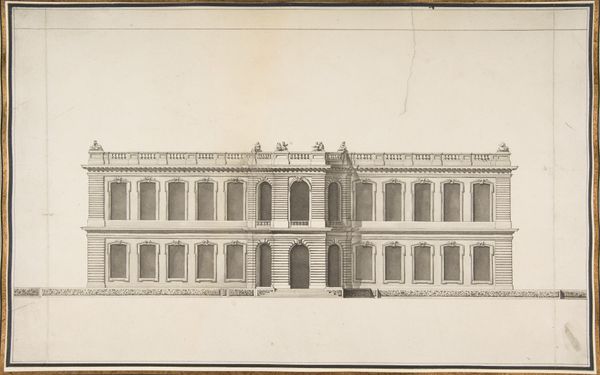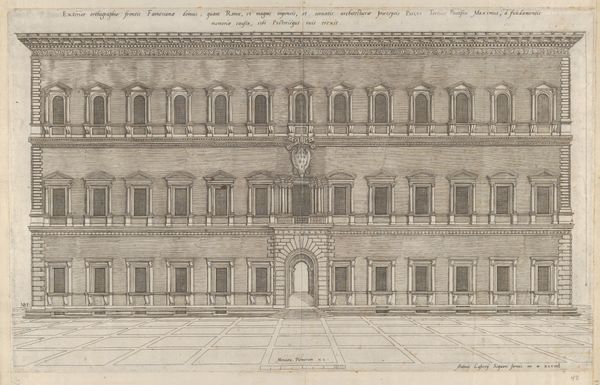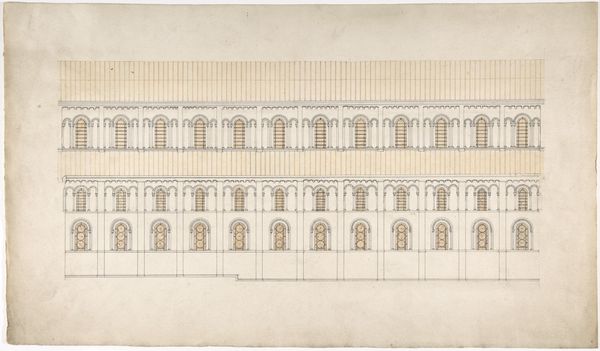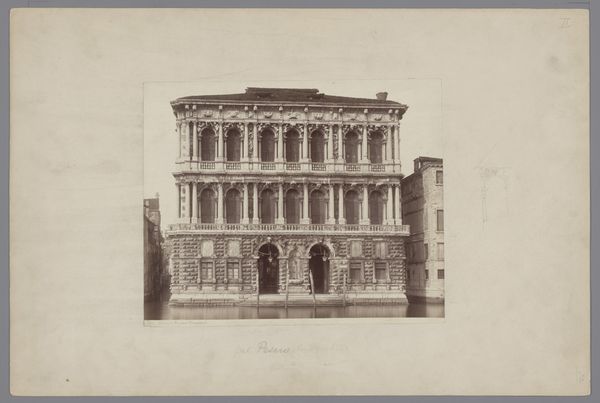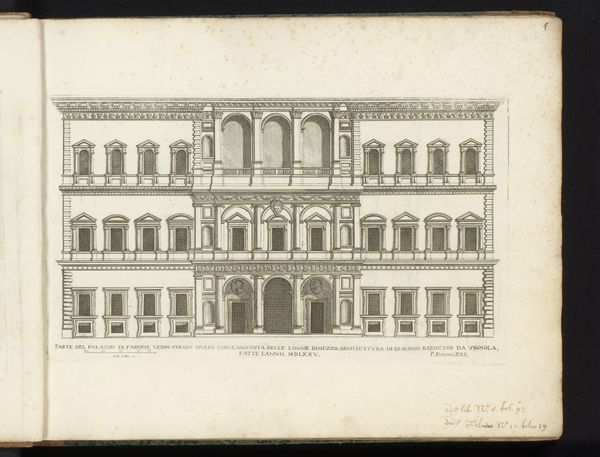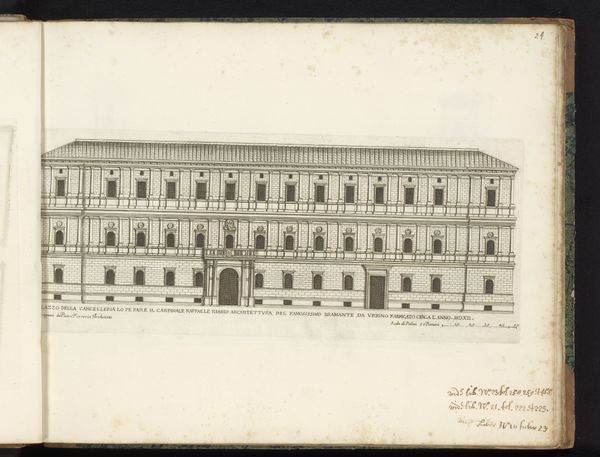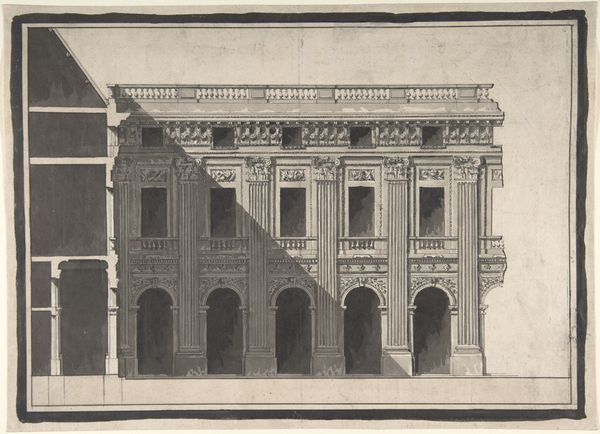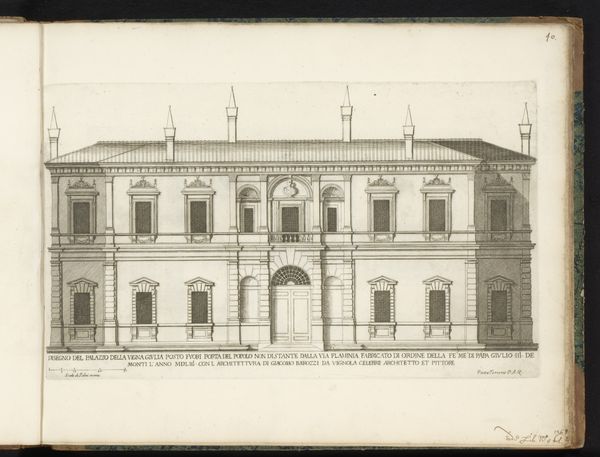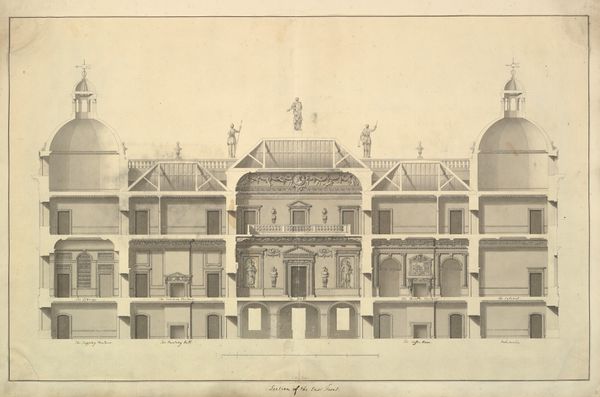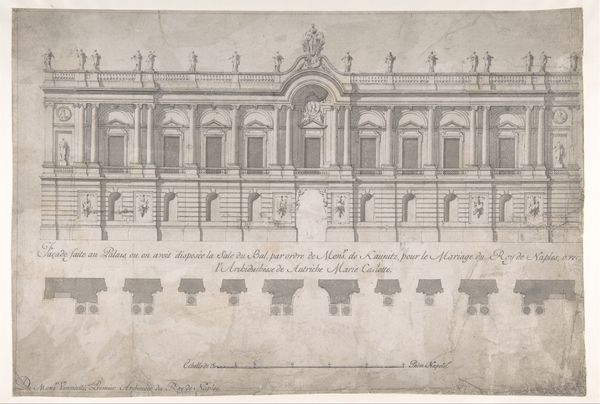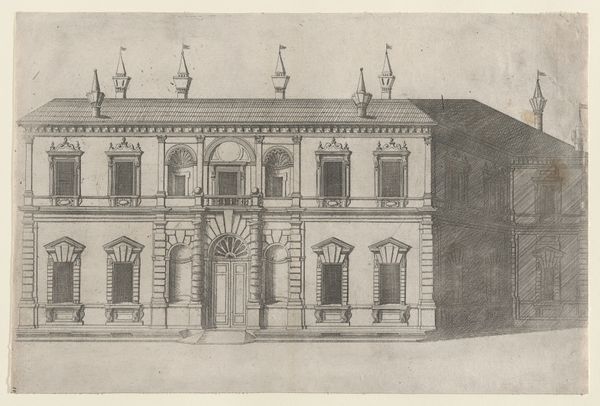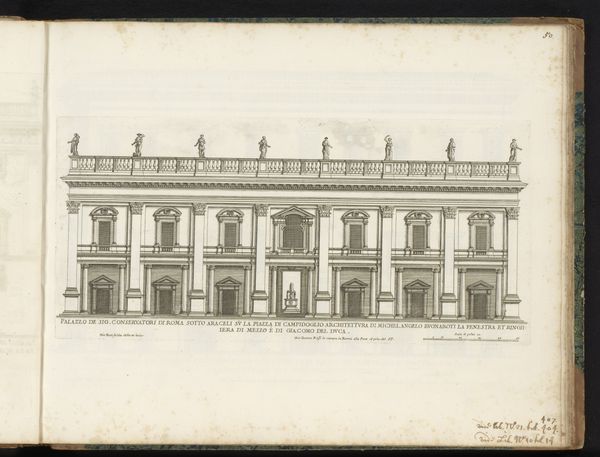
Copyright: Public Domain
Curator: Standing before us is a pen-and-ink sketch titled "Whitehall Palace," created sometime between 1715 and 1770 by Henry Flitcroft. It’s currently held here at the Metropolitan Museum of Art. Editor: It's...monumental, even on paper. A kind of frozen, symmetrical grandeur. Makes me feel strangely calm, like looking at a particularly well-organized spreadsheet. Curator: Calm, interesting... I see in it the burgeoning neoclassical movement, aspiring toward rationality and order, very different from the Palace's actual history filled with all sort of plots and happenings! The regularity of the facade is meticulously rendered. Note the repeating rhythm of arches and windows, crowned by those statuettes. It’s almost as if Flitcroft is trying to impose a sense of flawless, eternal stability on the built environment. Editor: I suppose, I do wonder about the emotional resonance in these strictly ordered environments. Isn't it rather sterile to have all your experiences contained within perfect geometries, lacking chaos of any kind? Still the skill required to draw with such precision. Is there perhaps some comfort in seeing such careful documentation? Curator: Well, precisely. Consider the paper, the ink—the materiality lends a human element, a whisper of imperfection to this idealized image. Drawing mediates architecture and fantasy—one sketches it and you can fantasize it in some fashion and with that pen the whole world of politics changes because of one single image, in its core a fragile document of a place long gone Editor: It feels like a memory now. Curator: Indeed. A lost potential captured in ink and paper, waiting for the viewer to resurrect it with their gaze, for us to bring that fantasy, even its flaws, back into life. Editor: Perhaps every architectural drawing contains the ghost of a future not built. Fascinating. Curator: Precisely—art exists at its most powerful potential in drawing us into dialogues, where imagination has room enough to roam free across both the made and unmade, even as we remain safe. Editor: The dialogue, I believe, may be more precious than architecture ever truly has the power to achieve...
Comments
No comments
Be the first to comment and join the conversation on the ultimate creative platform.
